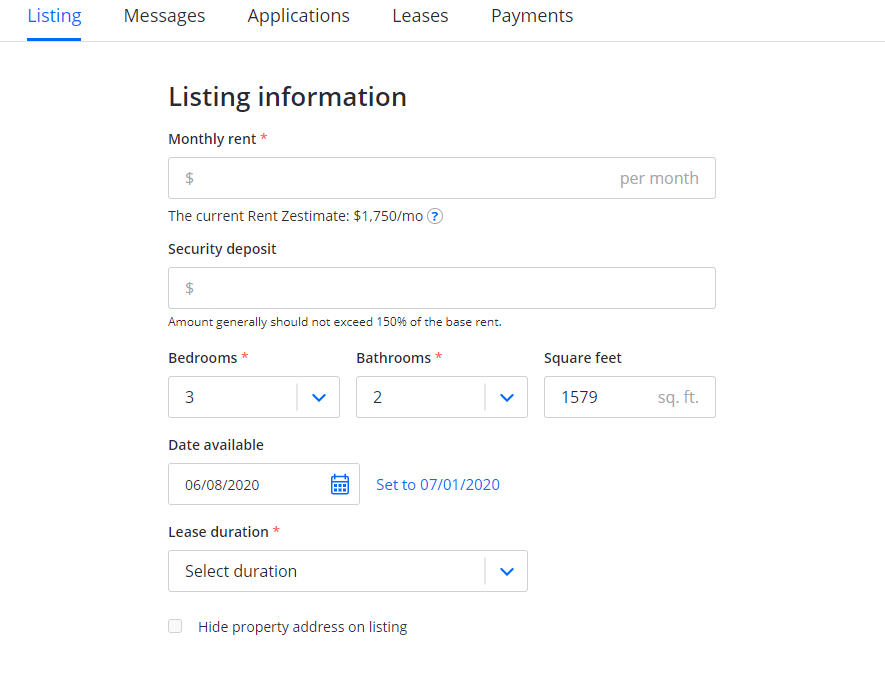
An investment property manager is a person who can help you purchase an investment property. You can reduce the stress of managing property and make sure you get the best value for your money by hiring a property manager. It is crucial to select the right property manager for your investment properties, especially if it is your first time landlord.
When it comes to managing your rental properties, there are many options. Some investors choose to manage their own properties while others prefer to have someone else do it. It all comes down to how much money you are willing and able to spend on your property, as well as how much time you can devote to it.
Property management can be a complicated industry. A property management company should have the expertise and experience needed to address the unique challenges that your investment presents. They should be able manage tenants, maintenance, evictions, marketing, and even leasing your properties to attract high-quality tenants.

One of the perks of hiring an investment property manager is that you are freed up to focus on your own business. Although having a property manger can make your life much easier, it is important to remember that different properties have different responsibilities. Some managers will have to promote your property, while others will need to take care of maintenance.
While self-managing your rental property can help you make a profit, it can be exhausting. For example, you must keep an eye on taxes, maintenance, and vacant properties. Plus, you have to be available to handle emergencies at any time of the day or night.
Property management systems that are flexible and responsive to all parties will be the most effective. Your investment property manager will therefore be able to offer multiple services, making your experience as efficient and pleasant as possible.
A good investment property manager can make your properties more profitable and provide you with the security you want. Your manager should be able help you reach your financial goals, regardless of whether you're a novice investor or seasoned investor.

Although a property manager may not be for everyone, it is worth the investment. In fact, it might be worth paying a fraction of your income to have your property managed. Moreover, a good property manager will be able to save you more than just your hard earned cash.
It is essential that you do your homework before hiring an investment management company. Ask about their fees to find out if the charges are reasonable. Make sure to research their clients. Ask for their references and inquire about any future vacancies.
You need a reliable property manager to help you find local contractors and handymen. Not only will this give you peace of mind, it will also help you ensure that your property is in tip-top shape.
FAQ
Which is easier, contracting or being handyman?
As you only require yourself and your tools, being a handyman takes less time than contracting. While contractors often rely on subcontractors, handymen must be able and willing to manage their own work schedules.
What's the time taken by a handyman for a project to be completed?
It depends on the size of the project. The time it takes to finish smaller projects is more common than larger ones. The average handyman will finish any size project within one week.
What training do I need to give a handyman in order to do my job?
No. Handymen have all the skills and knowledge necessary to complete any task. All they have to do is provide the materials necessary to complete the job.
Do I need to pay a handyman per hour or per project?
It comes down to personal preference. Some prefer to pay their handyman by the hour. This allows them to see exactly what they charge. Some prefer to pay each project individually, especially if they are working on multiple jobs simultaneously. Both are fine.
Statistics
- According to the U.S. Bureau of Labor Statistics, in May 2020, there are 1,357,630 handymen employed in the U.S.. (angi.com)
- An estimate was that in 2003, the market for home maintenance and repair spending was up 14% 2001 to 2003. (en.wikipedia.org)
- With a strong housing market, the handyman and general maintenance worker industry are expected to grow by nearly 10% in the next decade. (housecallpro.com)
- “Once the pandemic hit, that number fell to about 20%.” (inquirer.com)
- “Before the pandemic, 40% of people asked how we could estimate a job when we weren't there,” Rose recalled. (inquirer.com)
External Links
How To
How to replace a damaged tile
Step 1 - Take out the old tiles.
You can remove the old tiles from your floor and save them. These tiles should be kept intact in case you need them again. Note which pieces are missing or damaged to avoid having to search for replacements.
Step 2: Choose New Tiles
You can take a look at the different options for tile replacement.
-
Find a tile that is identical to the one you are removing.
-
You can use the measurements taken when you removed the tile to locate a matching piece. This will make it much easier to find the right size without measuring again.
-
Find colors, patterns textures, sizes and shapes in all possible combinations.
-
Consider what grout you prefer to use. Some prefer a solid color, while others like mixing it up.
-
Be sure to select a tile that is resistant against moisture.
-
Make sure you consider where your tile will be placed. It can help you save money and time.
-
Once you've picked your tile, place an order online or call your local Lowe's location to place it.
Step 3 - Place the tiles.
To install your tiles, follow the same procedure as before. It is important to align them correctly so they fit together properly.
Step 4 - Clean Up
Be sure to sweep up all debris from the floor before applying the final protective layer.
This will keep dust and dirt from getting into the grout between tiles, which could lead to mold.
Step 5 - Sand Down the Floor
After you have cleaned everything, sand the floor to remove any particles that were left from the previous step.
Step 6 – Finish Off
Once the floor is smooth, apply the protective coatings. It's important to wait until this point because wet paint can stain the surface of the new tiles.
To help prevent stains, you could always use a product called 'damp-anddry' on your floors.
However, it will not cover all possible problems that may arise after you have installed your tiles. For example, if you have a lot of kids running around, you may want to consider using an anti-slip coating on top of the protective layer.
Finally, don't forget to keep your protective sealer in place for several weeks before moving into your new home.